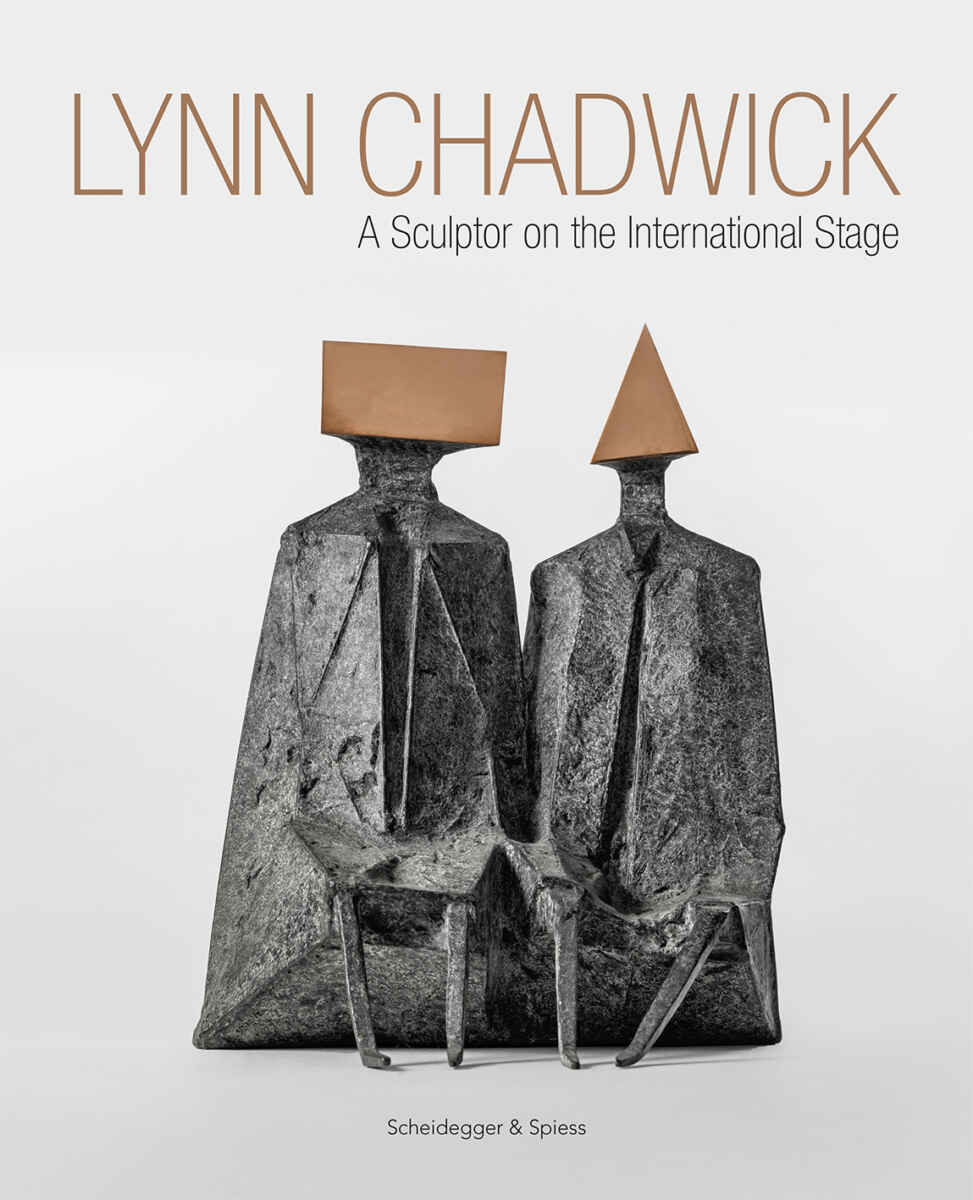
By 1956, Lynn Chadwick (1914-2003) had already produced over 200 sculptures and had shown throughout Europe and the United States, including exhibitions in New York, Chicago, Venice and Paris. For some years in the mid-twentieth century, he had been the darling of the art world, having won the International Prize for Sculpture at the 1956 Venice Biennale against Alberto Giacometti who, not only in my opinion, was THE sculptor of the twentieth century.
In the 2019 book Lynn Chadwick: A Sculptor on the International Stage (Amazon.com, Amazon.co.uk, Amazon.fr, Amazon.de), Michael Bird remarks on this subject: “No one would claim that this proved Chadwick to be a greater sculptor than Giacometti, but it does mean that they shared in a specific moment when people were looking to sculpture, in ways they had not done before, for a material expression of the spirit of the times.”
In the book Lynn Chadwick: A Sculptor on the International Stage, the two art historians Michael Bird and Marin R. Sullivan offer a fresh look at Lynn Chadwick and his work. Michael Bird presents Chadwick in the wider context of postwar European and American sculpture, including the work of Alberto Giacometti and David Smith who worked alongside Chadwick in Italy in 1962. Marin R. Sullivan focuses on Lynn Chadwick’s reception in the United States.
Michael Bird explains that the characteristic silhouettes of Chadwick’s figure sculptures—especially the long series of standing, sitting, and reclining couples on which he worked between 1968 and 1990—can actually stop you looking longer, seeing more. He mentions the infinitesimal adjustments in the male and female figures’ relation to each other—the elusive “attitude” which, for Chadwick, was a sculpture’s whole expressive point. Michael Birds stresses the paradox that sculptures such as Two Dancing Figures, Encounter VI or Two Reclining Figures, constructed from obdurate metal and cement, with a surface finish like an armored carapace, can articulate intimacy, vulnerability, even humor.
The critic Herbert Read coined the term “geometry of fear” for the works of Lynn Chadwick and other emerging postwar British sculptors. Michael Bird writes that this diverts attention from the lighter side of Chadwick’s work—lightness in the sense that, when measured on the existentialist scale, even the darkest humor is light, and also in the sense of being concerned, literally and metaphorically, with balance. According to Michael Bird, balance is perhaps the most essential and consistent aspect of Lynn Chadwick’s sculpture, from his first homemade hanging mobiles to the precision-fabricated stainless-steel Beasts of the 1990s.
Marin R. Sullivan focuses on Lynn Chadwick’s reception in the United States, where today he remains far less celebrated or even known—even though his work is represented in the collections of most major arts institutions and countless private collections. The largest private collection of maquettes and large-scale sculpture by Lynn Chadwick is owned by the Berman Museum of Art at Ursinus College in rural Pennsylvania.
Marin R. Sullivan writes that Lynn Chadwick was first introduced to audiences in the United States as part of the group of young British sculptors who had been chosen to represent their country at the 1952 Venice Biennale. Though Chadwick’s work was exhibited widely across the United States in the years following both the 1952 and 1956 Biennales, it was almost always done within the context of the new national school of British sculpture dubbed “geometry of fear” by Herbert Read. American collectors, critics and curators celebrated Chadwick’s work in the 1950s, but almost always positioned it alongside work by contemporaries like Kenneth Armitage and Reg Butler or in contrast to the preceding generation, exemplified by the work of Henry Moore and Barbara Hepworth.
Marin R. Sullivan highlights that, by the 1960s and 1970s, general and critical interest in Lynn Chadwick had largely diminished. Founded by the art collectors Muriel and Philip Berman, the realization and subsequent exhibition of the “Chadwick Collection” at the Berman Museum in the late 1980s and 1990s proved an important catalyst for a renewed engagement with the sculptor’s work in the United States and abroad. However, in North America he is still yet to receive a retrospective exhibition at any major arts institution, and little substantive scholarship or criticism has been published. I would add that a look at auctions by Sotheby’s and Christie’s, to mention just the two leading auction houses, proofs that Lynn Chadwick is popular with art collectors.
These are just a few remarks taken from the book Lynn Chadwick: A Sculptor on the International Stage. Edited by Michael Bird, with contributions by Daniel Chadwick, Eva Chadwick, Sarah Marchant, Marin R. Sullivan and Michael Bird. Hardcover, Scheidegger & Spiess, 2019, 232 pages, with 136 color and 87 b/w illustrations, 24×30 cm. Order the book from Amazon.com, Amazon.co.uk, Amazon.fr, Amazon.de.

This book review is based on Lynn Chadwick: A Sculptor on the International Stage (Amazon.com, Amazon.co.uk, Amazon.fr, Amazon.de). For a better reading, quotations and partial quotations in this book review are not always put between quotation marks.
Book review added on December 19, 2022 at 16:22 German time. Typo corrected on December 28, 2022: the book Lynn Chadwick: A Sculptor on the International Stage was published in 2019 [not 219].